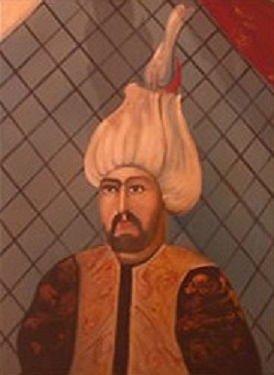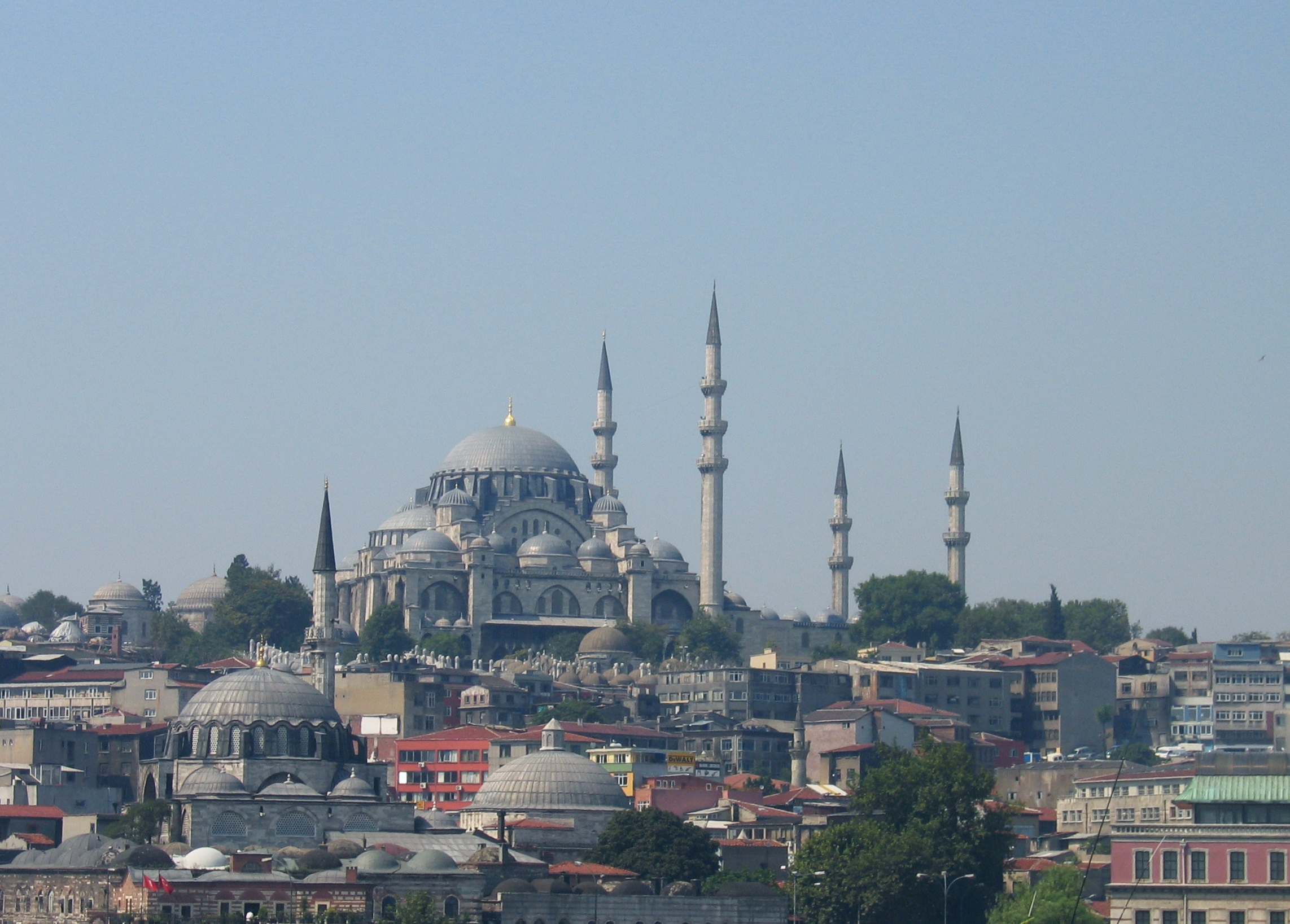|
Sokollu Mehmed Pasha Mosque, Lüleburgaz
The Sokollu Mehmed Pasha Mosque ( tr, Sokollu Mehmet Paşa Camii) is a 16th-century Ottoman mosque located in the town of Lüleburgaz in the Kırklareli Province of northwestern Turkey. The mosque was commissioned by the grand vizier Sokollu Mehmed Pasha Sokollu Mehmed Pasha ( ota, صوقوللى محمد پاشا, Ṣoḳollu Meḥmed Pașa, tr, Sokollu Mehmet Paşa; ; ; 1506 – 11 October 1579) was an Ottoman statesman most notable for being the Grand Vizier of the Ottoman Empire. Born in ... (in office 1565–1579) and designed by the imperial architect Mimar Sinan. It was built between 1565 and 1569-70 and forms part of a large complex that includes a ''medrese'' (theological school), a hospice and a caravansarai. See also * List of Friday mosques designed by Mimar Sinan References Sources * External linksSokollu Mehmet Paşa Külliyesi Archnet Ottoman mosques in Turkey 16th-century mosques Religious buildings and structures completed in 1569 1569 esta ... [...More Info...] [...Related Items...] OR: [Wikipedia] [Google] [Baidu] |
Lüleburgaz
Lüleburgaz (, Modern Greek: Λουλέ Μπουργκάς ''Lule Burgas'', Bulgarian: Люлебургаз ''Lyuleburgaz''), Bergoulion (Ancient Greek: Βεργούλιον) or Arcadiopolis (Ancient Greek: Αρκαδιόυπολις ''Arkadiópolis'') is the largest city and district of Kırklareli Province in the Marmara region of Turkey. Located near the border with Bulgaria within the historic region of East Thrace in Rumelia, the city is home to many Balkan Turks from Albania, Bulgaria, Greece, Romania and ex-Yugoslavia who immigrated to Turkey since the 19th century. Lüleburgaz is a hub for road and rail transportation, with the city being connected to Istanbul and Edirne by the Istanbul-Kapikule Regional Train and to Plovdiv, Sofia, Belgrade, Bucharest and Budapest by the Bosphorus Express and the Istanbul-Sofia Express. The city has an urban population of 122,635 (2021 census). Its best known attraction is the 16th-century Sokollu Mehmed Pasha Mosque, named after t ... [...More Info...] [...Related Items...] OR: [Wikipedia] [Google] [Baidu] |
Kırklareli Province
Kırklareli Province ( tr, ) is a province in northwestern Turkey on the west coast of the Black Sea. The province neighbours Bulgaria to the north along a long border. It borders the province of Edirne to the west and the province of Tekirdağ to the south and province of Istanbul to the southeast. Kırklareli is the capital city of the province. The province's and its central city's name means ''"the land of the forties"'' in Turkish and it may refer either to the forty Ottoman ghazis sent by the sultan Murad I to conquer the city for the Ottoman Empire in the 14th century or to the forty churches reported to be situated in the region before the Ottoman conquest, as attested by the former name of Kırklareli (''Kırk Kilise'' in Turkish; Σαράντα Εκκλησιές). There is a memorial on a hilltop in Kırklareli city, called "Kırklar Anıtı" (''the Memorial of the Forties'' in Turkish) to honor the Ottoman conquerors (''For more on the name's origins, see Kır ... [...More Info...] [...Related Items...] OR: [Wikipedia] [Google] [Baidu] |
Sunni Islam
Sunni Islam () is the largest branch of Islam, followed by 85–90% of the world's Muslims. Its name comes from the word '' Sunnah'', referring to the tradition of Muhammad. The differences between Sunni and Shia Muslims arose from a disagreement over the succession to Muhammad and subsequently acquired broader political significance, as well as theological and juridical dimensions. According to Sunni traditions, Muhammad left no successor and the participants of the Saqifah event appointed Abu Bakr as the next-in-line (the first caliph). This contrasts with the Shia view, which holds that Muhammad appointed his son-in-law and cousin Ali ibn Abi Talib as his successor. The adherents of Sunni Islam are referred to in Arabic as ("the people of the Sunnah and the community") or for short. In English, its doctrines and practices are sometimes called ''Sunnism'', while adherents are known as Sunni Muslims, Sunnis, Sunnites and Ahlus Sunnah. Sunni Islam is sometimes refe ... [...More Info...] [...Related Items...] OR: [Wikipedia] [Google] [Baidu] |
Mimar Sinan
Mimar Sinan ( ota, معمار سينان, translit=Mi'mâr Sinân, , ) ( 1488–1490 – 17 July 1588) also known as Koca Mi'mâr Sinân Âğâ, ("Sinan Agha the Grand Architect" or "Grand Sinan") was the chief Ottoman architect ( tr, links=no, mimar) and civil engineer for sultans Suleiman the Magnificent, Selim II and Murad III. He was responsible for the construction of more than 300 major structures and other more modest projects, such as schools. His apprentices would later design the Sultan Ahmed Mosque in Istanbul and Stari Most in Mostar. The son of a stonemason, he received a technical education and became a military engineer. He rose rapidly through the ranks to become first an officer and finally a Janissary commander, with the honorific title of Sinan.Goodwin (2001), p. 87 He refined his architectural and engineering skills while on campaign with the Janissaries, becoming expert at constructing fortifications of all kinds, as well as military infrastructure p ... [...More Info...] [...Related Items...] OR: [Wikipedia] [Google] [Baidu] |
Ottoman Empire
The Ottoman Empire, * ; is an archaic version. The definite article forms and were synonymous * and el, Оθωμανική Αυτοκρατορία, Othōmanikē Avtokratoria, label=none * info page on book at Martin Luther University) // CITED: p. 36 (PDF p. 38/338) also known as the Turkish Empire, was an empire that controlled much of Southeast Europe, Western Asia, and Northern Africa between the 14th and early 20th centuries. It was founded at the end of the 13th century in northwestern Anatolia in the town of Söğüt (modern-day Bilecik Province) by the Turkoman tribal leader Osman I. After 1354, the Ottomans crossed into Europe and, with the conquest of the Balkans, the Ottoman beylik was transformed into a transcontinental empire. The Ottomans ended the Byzantine Empire with the conquest of Constantinople in 1453 by Mehmed the Conqueror. Under the reign of Suleiman the Magnificent, the Ottoman Empire marked the peak of its power and prosperity, as well a ... [...More Info...] [...Related Items...] OR: [Wikipedia] [Google] [Baidu] |
Mosque
A mosque (; from ar, مَسْجِد, masjid, ; literally "place of ritual prostration"), also called masjid, is a place of prayer for Muslims. Mosques are usually covered buildings, but can be any place where prayers ( sujud) are performed, including outdoor courtyards. The first mosques were simple places of prayer for Muslims, and may have been open spaces rather than buildings. In the first stage of Islamic architecture, 650-750 CE, early mosques comprised open and closed covered spaces enclosed by walls, often with minarets from which calls to prayer were issued. Mosque buildings typically contain an ornamental niche ('' mihrab'') set into the wall that indicates the direction of Mecca (''qiblah''), Wudu, ablution facilities. The pulpit (''minbar''), from which the Friday (jumu'ah) sermon (''khutba'') is delivered, was in earlier times characteristic of the central city mosque, but has since become common in smaller mosques. Mosques typically have Islam and gender se ... [...More Info...] [...Related Items...] OR: [Wikipedia] [Google] [Baidu] |
Sokollu Mehmed Pasha
Sokollu Mehmed Pasha ( ota, صوقوللى محمد پاشا, Ṣoḳollu Meḥmed Pașa, tr, Sokollu Mehmet Paşa; ; ; 1506 – 11 October 1579) was an Ottoman statesman most notable for being the Grand Vizier of the Ottoman Empire. Born in Ottoman Herzegovina into an Orthodox Christian Serbian family, Mehmed was abducted at an early age as part of the Ottoman devşirme system of forcibly recruiting Christian boys to be raised to serve as a janissary. He rose through the ranks of the Ottoman imperial system, eventually holding positions as commander of the imperial guard (1543–1546), High Admiral of the Fleet (1546–1551), Governor-General of Rumelia (1551–1555), Third Vizier (1555–1561), Second Vizier (1561–1565), and as Grand Vizier (1565–1579, for a total of 14 years, three months, 17 days) under three sultans: Suleiman the Magnificent, Selim II, and Murad III.Imamović, Mustafa (1996). Historija Bošnjaka. Sarajevo: BZK Preporod. He was assassinated in 1579, ... [...More Info...] [...Related Items...] OR: [Wikipedia] [Google] [Baidu] |
List Of Friday Mosques Designed By Mimar Sinan
This is a list of the Friday mosques for which the Ottoman architect Mimar Sinan claimed responsibility in his autobiographies. Of the 77 mosques in the list, 39 are in Istanbul. Background Mimar Sinan was appointed to the post of chief Ottoman architect by the grand vizier Ayas Mehmed Pasha in 1539. Sinan occupied the position until his death in 1588 and served under three sultans: Süleyman I (ruled 1520–66), Selim II (ruled 1566–74) and Murad III (ruled 1574–95). In his autobiography ''Biographical Memoir of Construction'' (''Teẕkiretü’l-bünyān''), Sinan claimed to have designed 698 building including 80 Friday mosques and more than 400 smaller community mosques (''masjids''). In reality he led a team of royal architects and the buildings would have been collective works. Sinan himself would have been occupied with the large building projects undertaken for the sultan. These were the Şehzade Mosque (1543–48), the Süleymaniye Mosque (1548–59), the Kirk� ... [...More Info...] [...Related Items...] OR: [Wikipedia] [Google] [Baidu] |
Ottoman Mosques In Turkey
Ottoman is the Turkish spelling of the Arabic masculine given name Uthman ( ar, عُثْمان, ‘uthmān). It may refer to: Governments and dynasties * Ottoman Caliphate, an Islamic caliphate from 1517 to 1924 * Ottoman Empire, in existence from 1299 to 1922 ** Ottoman dynasty, ruling family of the Ottoman Empire *** Osmanoğlu family, modern members of the family * Ottoman architecture Ethnicities and languages * Ottoman Armenians, the Armenian ethnic group in the Ottoman Empire * Ottoman Greeks, the Greek ethnic group in the Ottoman Empire * Ottoman Serbs, the Serbian ethnic group in the Ottoman Empire * Ottoman Turks, the Turkic ethnic group in the Ottoman Empire ** Ottoman Turkish alphabet ** Ottoman Turkish language, the variety of the Turkish language that was used in the Ottoman Empire Products * Ottoman bed, a type of storage bed * Ottoman (furniture), padded stool or footstool * Ottoman (textile), fabric with a pronounced ribbed or corded effect, often made of s ... [...More Info...] [...Related Items...] OR: [Wikipedia] [Google] [Baidu] |
16th-century Mosques
The 16th century begins with the Julian year 1501 ( MDI) and ends with either the Julian or the Gregorian year 1600 ( MDC) (depending on the reckoning used; the Gregorian calendar introduced a lapse of 10 days in October 1582). The 16th century is regarded by historians as the century which saw the rise of Western civilization and the Islamic gunpowder empires. The Renaissance in Italy and Europe saw the emergence of important artists, authors and scientists, and led to the foundation of important subjects which include accounting and political science. Copernicus proposed the heliocentric universe, which was met with strong resistance, and Tycho Brahe refuted the theory of celestial spheres through observational measurement of the 1572 appearance of a Milky Way supernova. These events directly challenged the long-held notion of an immutable universe supported by Ptolemy and Aristotle, and led to major revolutions in astronomy and science. Galileo Galilei became a champi ... [...More Info...] [...Related Items...] OR: [Wikipedia] [Google] [Baidu] |
Religious Buildings And Structures Completed In 1569
Religion is usually defined as a social-cultural system of designated behaviors and practices, morals, beliefs, worldviews, texts, sanctified places, prophecies, ethics, or organizations, that generally relates humanity to supernatural, transcendental, and spiritual elements; however, there is no scholarly consensus over what precisely constitutes a religion. Different religions may or may not contain various elements ranging from the divine, sacred things, faith,Tillich, P. (1957) ''Dynamics of faith''. Harper Perennial; (p. 1). a supernatural being or supernatural beings or "some sort of ultimacy and transcendence that will provide norms and power for the rest of life". Religious practices may include rituals, sermons, commemoration or veneration (of deities or saints), sacrifices, festivals, feasts, trances, initiations, funerary services, matrimonial services, meditation, prayer, music, art, dance, public service, or other aspects of human culture. Religions ha ... [...More Info...] [...Related Items...] OR: [Wikipedia] [Google] [Baidu] |






